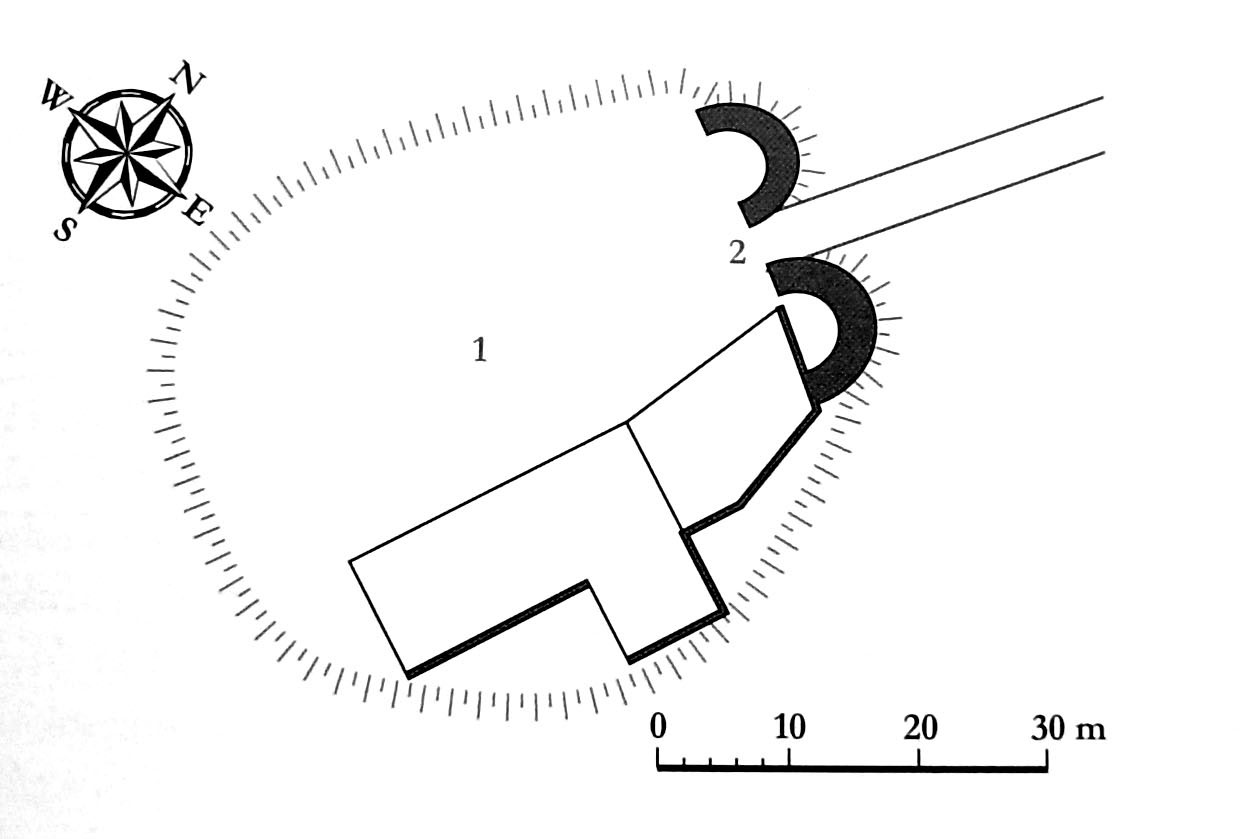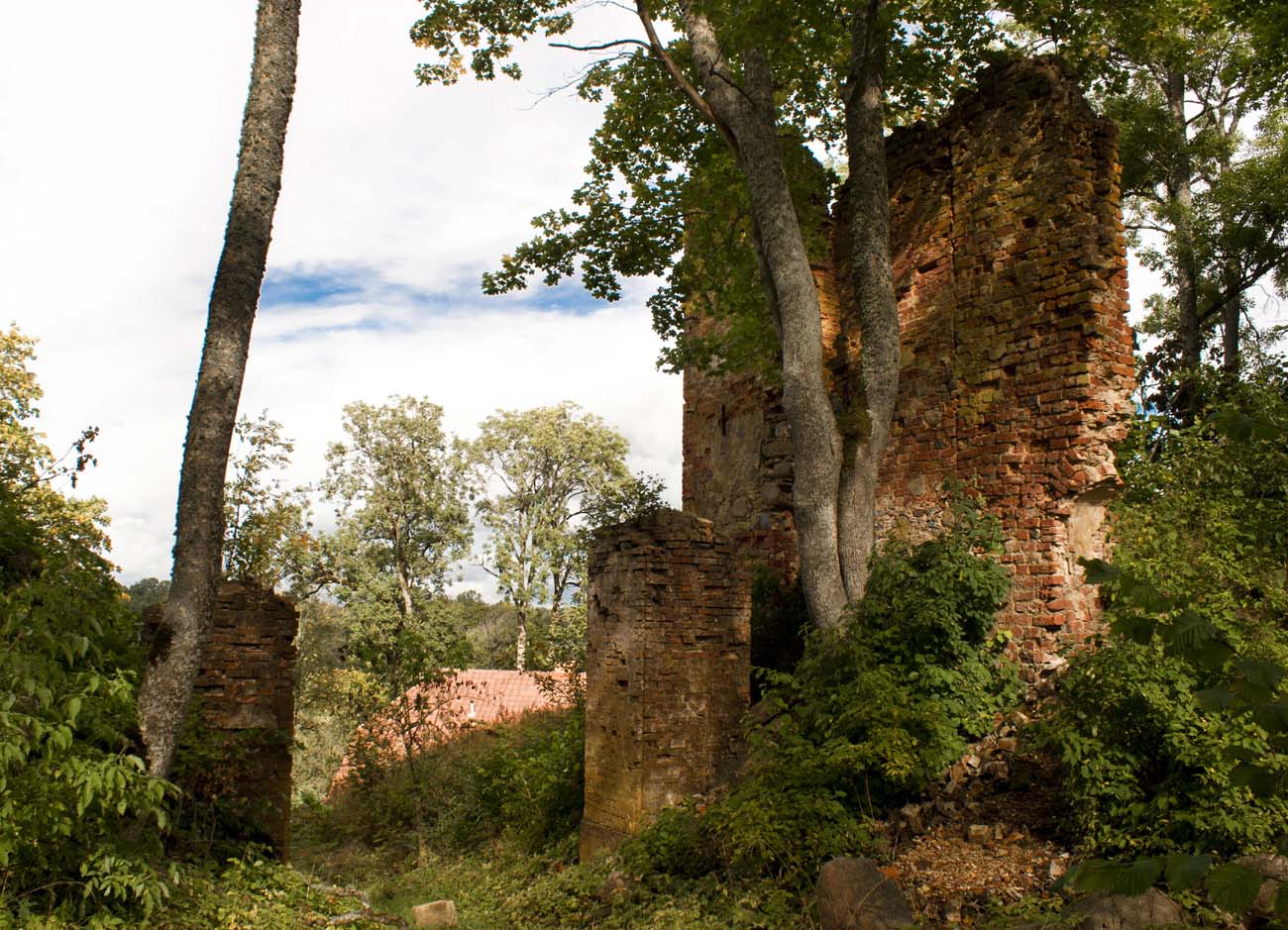History
It is assumed that the castle Amboten was built in 1265 by the Livonian landmaster Konrad von Mandern. Since these areas were assigned to the Courland bishopric, the legal status of the castle remained uncertain. For most of the 13th century, it was the seat of the Teutonic vogt, and only towards the end of the century, the stronghold was eventually granted to the Courland bishops, who converted it for one of their residences. They managed the castle until the 16th century, and even before the secularization of Livonia, around 1537, Amboten passed into private hands. In subsequent centuries, the castle was destroyed several times, including in 1702 during the Great Northern War. Rebuilt, it remained in the hands of German landowners who finally dropped it after a fire in 1920. It has been abandoned in ruin since then.
Architecture
Amboten was a small castle consisting of a single defensive wall surrounding a courtyard with an irregular shape adapted to the hill. The most important element of the fortifications were two semicircular towers located in the northern part of the castle, protecting the gate between them. The residential buildings should be found on the opposite side of the courtyard.
Current state
Currently, on the castle hill has been preserved relatively high fragments of brick walls, which, although partly modern, mostly originate from medieval times.
bibliography:
Borowski T., Miasta, zamki i klasztory. Inflanty, Warszawa 2010.


